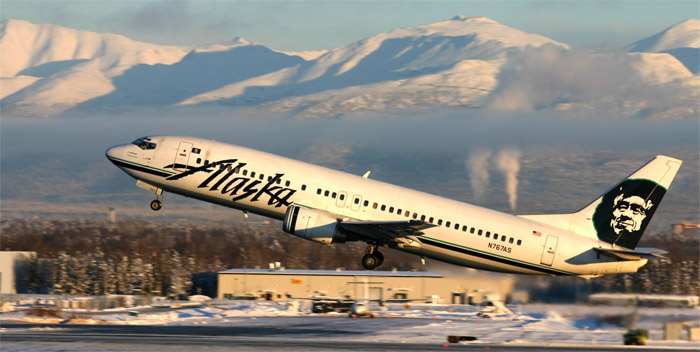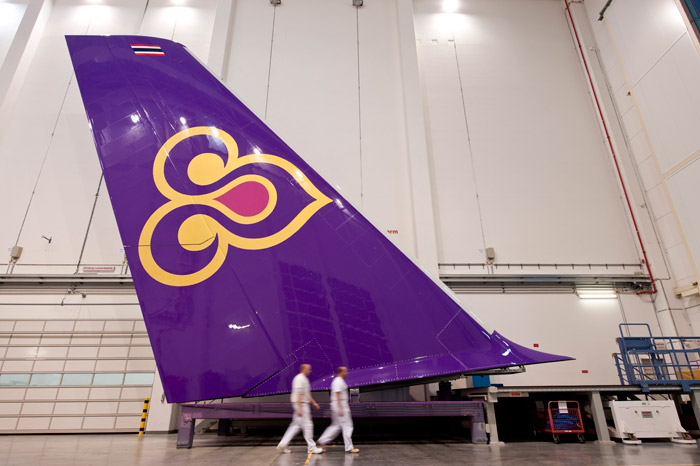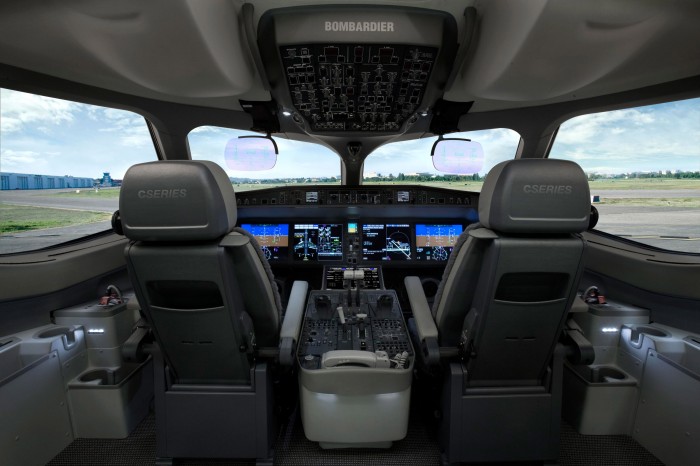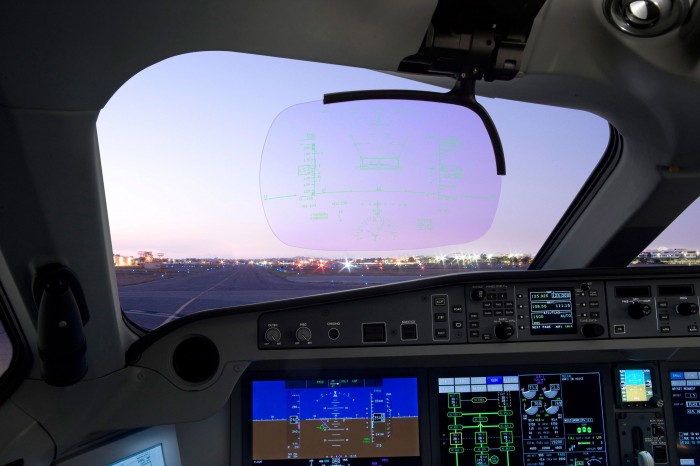These days across Europe we see more and more commercial flights using biofuel. Even being just test flights, far away from commercial daily usage, these flights are a huge step forward in terms of a greener, more eco friendly future of aviation. Air France and Airbus have completed the world’s greenest commercial flight by combining the latest bio fuel and air traffic management technologies. The flight from Toulouse-Blagnac to Paris-Orly using an Airbus A321 has been able to demonstrate the cutting in half of CO2 emitted compared to a regular flight.
The commercial flight combined for the first time the use of bio-fuels (50 per cent in each engine), optimised air traffic management (ATM) and efficient Continuous Descent Approach (CDA) to minimise CO2 emissions. Combining these technologies helped half the overall CO2 emissions to 54 grams per passenger and kilometre. This is equivalent to a fuel efficiency of 2.2 litres of fuel per passenger and 100 Kilometres.
Bio-fuel is one solution for reducing overall CO2 emissions. Airbus’ alternative fuel strategy is to speed up its commercialisation through sustainable bio-fuel value chains. Thanks to several test flights and collaboration with the fuels standards bodies (ASTM and DefStan), today the use of 50 per cent bio-fuel blends are authorised in commercial flights.
A more efficient ATM system could also help reduce the amount of fuel burned by aircraft and therefore the CO2 emitted. Airbus strongly supports the streamlining of ATM and has launched a new subsidiary company, called “Airbus ProSky”, dedicated to the development and support of modern air traffic management (ATM) systems to achieve the highest operational efficiencies with more direct routings resulting in around 10 percent less aircraft fuel consumption, as well as significant reductions in CO2 and noise emissions. CDA is becoming more widespread as a way to reduce fuel burn. During a CDA procedure, the aircraft descends continuously, avoiding level flight prior to the final approach and requires significantly less engine thrust and therefore less fuel burn.
Just a few days ago, British carrier Thomson Airways became the first UK airline to fly customers on sustainable biofuel when they operated a Boeing 757-200 on a flight from Birmingham to Arrecife. The sustainable biofuel used by Thomson Airways is supplied by Dutch-based company SkyNRG, who is advised by an independent Sustainability Board consisting of two leading NGOs and a leading Government scientific institute. Platinum Fuels have been chosen as the fuel handler to fuel the aircraft.
Currently Thomson has scheduled daily operations using biofuel for early 2012. As sustainable biofuels become more commercially viable, Thomson Airways plans to expand its use of sustainable biofuels across its fleet.
Biofuel Infografic – provided by Thomson Airways:
Sunday, December 11, 2011
Delta Orders 100 Boeing 737-900ERs
Delta Air Lines today announced an order for 100 Boeing 737-900ERs. The order is part of Delta’s fleet renewal effort to replace its older, less efficient single-aisle fleet. (MD-90 / MD-88)
The Boeing 737-900ER is the newest member of the Next-Generation 737 airplane family. It also is the highest capacity, longest-range airplane in Boeing’s single-aisle fleet. New aerodynamic and structural design changes allow the airplane to carry up to 180 passengers in a typical two-class layout.
All of the airplanes will feature the new Boeing Sky Interior.

Source: Boeing
Image: (c) Boeing
The Boeing 737-900ER is the newest member of the Next-Generation 737 airplane family. It also is the highest capacity, longest-range airplane in Boeing’s single-aisle fleet. New aerodynamic and structural design changes allow the airplane to carry up to 180 passengers in a typical two-class layout.
All of the airplanes will feature the new Boeing Sky Interior.

Source: Boeing
Image: (c) Boeing
FAA – Civil Penalty Against Alaska Airlines
The FAA is proposing a $590,000 civil penalty against Alaska Airlines for allegedly operating a Boeing 737-400 on 2107 flights when it was not in compliance with Federal Aviation Regulations.
On Jan. 18, 2010, a flight deck ceiling fire occurred in a Boeing 737-400 while it was parked at the gate at Anchorage International Airport. Investigators determined the fire was caused by chafed wiring that had resulted from improper installation of a hose clamp. The Boeing 737-400 maintenance manual includes an explicit warning about proper installation of the hose clamp. Alaska subsequently discovered the same problem existed on nine other 737-400s in its fleet and made corrections. There were no other fires.
“Maintenance work has to be performed precisely and correctly every time,” said FAA Administrator Randy Babbitt. “Improper maintenance can have serious consequences.”

Source: FAA
On Jan. 18, 2010, a flight deck ceiling fire occurred in a Boeing 737-400 while it was parked at the gate at Anchorage International Airport. Investigators determined the fire was caused by chafed wiring that had resulted from improper installation of a hose clamp. The Boeing 737-400 maintenance manual includes an explicit warning about proper installation of the hose clamp. Alaska subsequently discovered the same problem existed on nine other 737-400s in its fleet and made corrections. There were no other fires.
“Maintenance work has to be performed precisely and correctly every time,” said FAA Administrator Randy Babbitt. “Improper maintenance can have serious consequences.”

Source: FAA
Photo – Thai Airbus A380 Vertical Fin
The vertical tail section for the first Thai Airways International (THAI) Airbus A380 has been painted with the airline’s orchid logo at Airbus facilities in Hamburg, Germany. The painting was completed last week, and the section is now being shipped to Toulouse, France. Assembly of the aircraft is set to begin later this month.
THAI will become the ninth Airbus A380 operator when it takes delivery in the third quarter of 2012.

Photo: Airbus S.A.S by C. Brinkmann
THAI will become the ninth Airbus A380 operator when it takes delivery in the third quarter of 2012.

Photos – Bombardier CSeries Flight Deck
At Dubai Airshow that is currently taking place in Dubai, United Arab Emirates, Bombardier presented a full-scale flight deck demonstrator for the all-new CSeries aircraft.
As in a real aircraft, visitors can “board” the CSeries aircraft demonstrator, turn left to experience the flight deck or turn right to walk down the aisle of the cabin. The cabin features spacious seating, increased shoulder space, extra large windows and upsized overhead storage that deliver a new level of widebody comfort in a single-aisle aircraft.
The all-new design of the CSeries aircraft flight deck benefits from the latest avionics technology and features a number of state-of-the-art communication and navigation aids, developed with the future in mind.

The integrated flight deck features high-resolution 15.1-inch diagonal LCD displays, the industry’s largest, which are capable of enhanced and synthetic vision future upgrades. The flight management system display is based on a phase of flight approach, giving the flight crew improved access to information while reducing workload. Graphical Flight Planning functionality allows the crew to click on the map to search for information or modify the flight plan, permitting increased situational awareness. An intuitive graphical human-machine interface enhances operational efficiency, reduces pilot workload and pilot training costs.

The MultiScan weather radar autonomously processes the entire block of atmosphere ahead of the aircraft and searches for the most significant weather information, without pilot intervention. The crew is alerted with a color change when the radar predicts wind shear, giving the crew plenty of time to take appropriate action.

The glareshield radio tuning is a feature unique to the CSeries aircraft that illustrates Bombardier’s focus on head-up flying. It allows critical tasks, such as frequency changes, head-up guidance system data entry, navigation control and support functions for the displays, to all be done from the glareshield.
Sidesticks allow the pilot to interface with the fly-by-wire control system that provides simplified handling with flight envelope protection. The Rockwell Collins Pro Line Fusion system offers extensive growth capabilities to meet all anticipated future air space requirements, as well as high reliability to meet the rigorous demands of commercial airline operations.
Source & Photos: (c) Bombardier Aerospace
As in a real aircraft, visitors can “board” the CSeries aircraft demonstrator, turn left to experience the flight deck or turn right to walk down the aisle of the cabin. The cabin features spacious seating, increased shoulder space, extra large windows and upsized overhead storage that deliver a new level of widebody comfort in a single-aisle aircraft.
The all-new design of the CSeries aircraft flight deck benefits from the latest avionics technology and features a number of state-of-the-art communication and navigation aids, developed with the future in mind.

The integrated flight deck features high-resolution 15.1-inch diagonal LCD displays, the industry’s largest, which are capable of enhanced and synthetic vision future upgrades. The flight management system display is based on a phase of flight approach, giving the flight crew improved access to information while reducing workload. Graphical Flight Planning functionality allows the crew to click on the map to search for information or modify the flight plan, permitting increased situational awareness. An intuitive graphical human-machine interface enhances operational efficiency, reduces pilot workload and pilot training costs.

The MultiScan weather radar autonomously processes the entire block of atmosphere ahead of the aircraft and searches for the most significant weather information, without pilot intervention. The crew is alerted with a color change when the radar predicts wind shear, giving the crew plenty of time to take appropriate action.

The glareshield radio tuning is a feature unique to the CSeries aircraft that illustrates Bombardier’s focus on head-up flying. It allows critical tasks, such as frequency changes, head-up guidance system data entry, navigation control and support functions for the displays, to all be done from the glareshield.
Sidesticks allow the pilot to interface with the fly-by-wire control system that provides simplified handling with flight envelope protection. The Rockwell Collins Pro Line Fusion system offers extensive growth capabilities to meet all anticipated future air space requirements, as well as high reliability to meet the rigorous demands of commercial airline operations.
Source & Photos: (c) Bombardier Aerospace
Subscribe to:
Comments (Atom)
